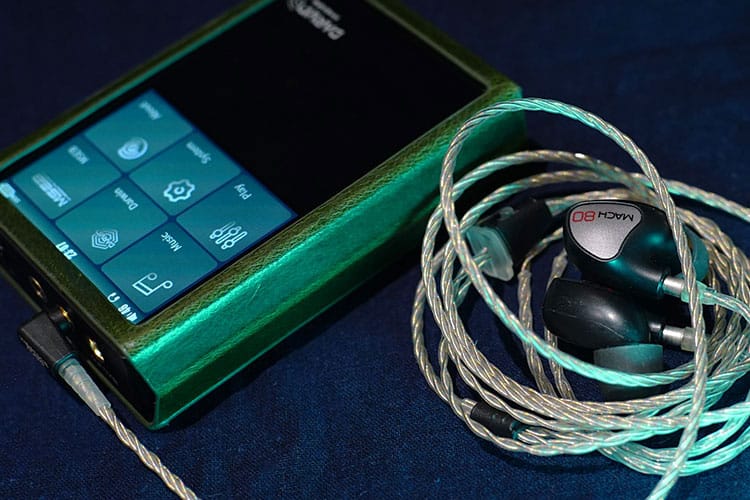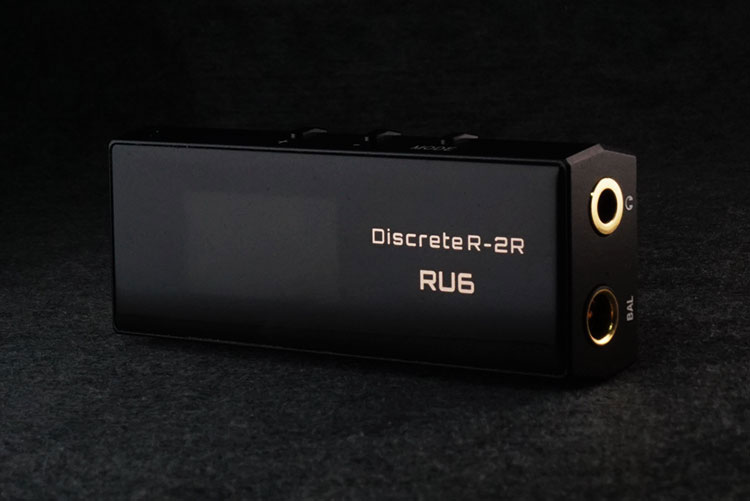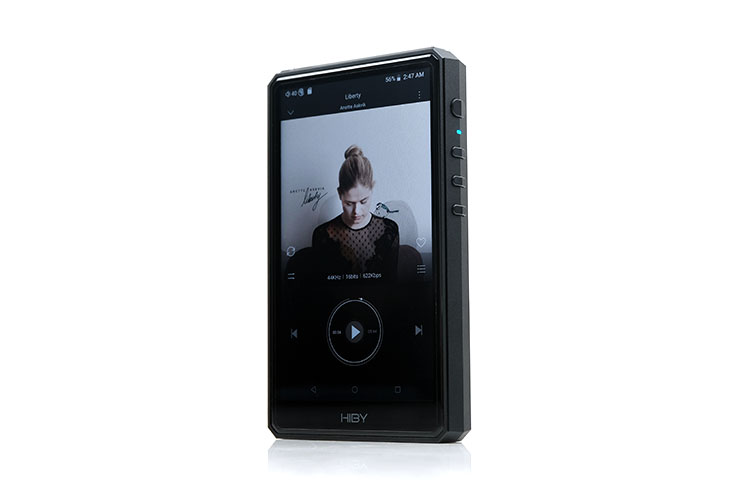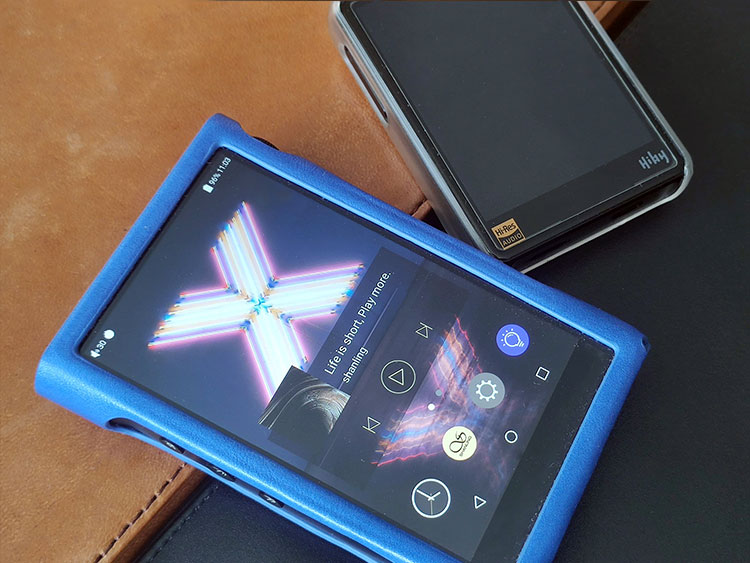Synergy
Efficiency
With a clean architecture that does not have modern wireless features, the RS2 has a dark output and is free from noise.
Testing with the Shure SE846, which is a pretty sensitive IEM, there is little to no noise being heard at higher volume. I am not detecting any noise when listening outdoors with the Westone MACH 60 we recently covered.
Output power on the RS2 is a bit limited though by no means shabby going balanced. That is why the recommendation would be to pair with sensitive IEMs and to make good use of the filters that can boost the resolution and presence of the two ends of the spectrum.
Pairings
The RS2 has more power on 4.4mm output than most dongles and as such, it offers more flexibility in pairing with multi-BAs also dynamic IEMs that are not very sensitive.
It can drive the HiBy Seeds II IEMs with a single dynamic driver dynamic and an airy bass performance while maintaining good density in the midrange that is intensely presented.
The Shure SE846 I used to test background hiss sounds energetic and full in the mid-lows with its highly resolving character complementing the RS2 coloring it’s mid-lows meatier and smoother.
Testing with the moderately insensitive Westone MACH 60 measured at 100db in sensitivity and 35Ω in impedance, the RS2 can still handle it well to sound resolving and quite natural in tone.
The MSEB tools especially the overtone manipulation and the brightness control are particularly helpful to enhance clarity and crispiness in the output.
Generally speaking, sensitive multi-BA IEMs pairs the best with the RS2. However, the DSP tweaks are a great tool to further enhance the clarity, vividness, and overtones that could completely change the experience.
Select Comparisons
Cayin RU6
249.99
Technical
The Cayin RU6 is one of the earlier contenders for the budget R2R category. It supports up to 24-bit decoding, offering tube-like tonality, and is packed within a highly portable dongle format.
The RU6 features a highly precise resistor network for volume control and NOS/OS filters. When turning on the oversampling mode the digital stream is up-sampled to 384Hz and strengthens the resolution as well as anti-aliasing level.
The RS2 we are reviewing this time is much more feature-rich packing in similar NOS/OS features, MSEB tuning, and lineout, which makes it more flexible in connectivity.
At the same time, the RS2 can also be used as a dongle/USB DAC via an uncharged mode that doesn’t take power from the host, being 50% more powerful and able to power various IEMs satisfactorily.
Design
While the two products are not exactly from the same category, there is one fun similarity between the two R2R products which is their thickness. Both units are considerably taller when compared to similar devices.
Performance
When comparing the RU6 and RS2 with a USB source putting the RS2 on uncharged mode, it seems that their R2R DAC colors them in a similar direction, though there is still a distinct difference in the tuning design and comparative advantage on the RS2 due to its stronger output power.
Putting the RU6 on high gain, it is capable of powering sensitive multi-BAs to sound full and punchy in the low end. Compared to the RS2 it sounds smoother and slightly more protruded in the midrange frequencies, that are shyer on the RS2.
The RS2, being more powerful on paper, sounds denser and punches slightly deeper down the bass, also has a faster, more controlled, but less elaborative bass decay.
Putting on higher impedance loads the RU6 struggles to sound as dynamic and resolving as the RS2. Although the RS2 isn’t classified as a powerful DAP and the stock tuning is not as euphonic as the RU6, its MSEB features could further enhance the tonality and clarity.
It does so by slimming down the bass and enhancing transients and texture, allowing the listener to perceive a stronger sense of control and definition.
The RU6 is still very capable as a dongle and its tuning is more mature. However, the stronger DSP features and higher power on the RS2 are a lot more flexible for it to be paired with different IEMs, especially when under power constraints.
HiBy R5 Gen 2
$449
Technical
The larger HiBy R5 Gen 2 Android DAP features a discreet output stage, dual ES9219C decoding chipsets as well as a Class A amplifying circuit.
On Class A amplification mode, the R5 can output as much as 3.9Vrms and 475mW on a balanced connection. The SN ratio goes as high as 120dB with 99dB separation. Clearly, the focus is on stronger amplification and high output power, which is significantly different from the direction the RS2 takes.
Design
The R5 Gen 2 and the RS2 have the same design language, with basically the same button layout and I/O. The bigger size and stronger CPU on the R5 Gen 2 exchanges for better multimedia and longer playback time. The R5 also scores an impressive 35 hours of playback time on its LO using the non-Class-A Economy mode.
The RS2 looks and feels a lot more compact and it has taken away all the non-sound features, which makes it much less bulky if you already have a big phone to carry around.
Performance
At the same price bracket, the two DAPs are designed very differently. To make it short the RS2 sounds more organic and realistic in presentation.
Whereas the R5 Gen 2 has more power, and a stronger sense of digital processing that allows better resolution and air, especially in the upper mids. It can also be paired with higher impedance IEMs that may sound slow and flattened on the RS2.
MSEB tuning functions have drawn the RS2 closer to modern tunings but strong influence from the R2R architecture is always present. Meaty, punchy, and dense mid-bass always capture my attention and this smooth analog style feels very different from AKM/ESS DACs that process sound in a more electronic manner, boosting transients for clarity.
On the R5 Gen 2 you can hear a bigger picture and pick out more subtle details from the treble range, but it does not sound as 3D, acoustic, and realistic when compared to the RS2.
Shanling M3X
$339
Technical
The Shanling M3X features dual ESS Sabre ES9219C decoders, open Android 7.1, LDAC connectivity, 16x hardware MQA decoding, KDS oscillators, a 4.2-inch HD screen, and a stunning 23-hours max playback time.
The M3X also has a fun implementation where users can toggle between single or dual DAC mode which alters the output signature and detail retrieval level.
Interestingly, the battery on M3X is 3200mAh and it could output as much as 240mW on balanced whereas the RS2 has a 3500 mAh battery despite its smaller size and can output as much as 320mW. That is quite a bit higher than the M3X on balanced output.
Design
The M3X feels 40% bigger in size compared to the RS2 and has a rather large screen ratio that you could easily navigate single-handedly to enjoy Android features. The M3X takes a rounder approach while the RS2 has a sportier chassis and indicator lights, also two microSD card slots that allow easier expansion.
Both devices come with well-manufactured leather cases and are appealing in their own ways, also equally well-built.
Frankly saying in terms of system functions and wireless features the RS2 can’t beat the M3X as Android is much more powerful, but when it comes to DSP tweaks as well as portability, the RS2 is a clear winner here.
Performance
As mentioned above the RS2 packs in quite a huge battery for its size and is also engineered to be more powerful in the output. This is reflected in its sound performance, especially with bigger loads.
I can feel the RS2 powering dynamic IEMs and hybrids more effortlessly, punching more power down the lower end and sounding more intimate with its intense mid-lows.
The RS2 renders the music more effortlessly and lively, quite a bit more natural but not as stretched and textured in the upper register as on the M3X.
On stock settings, it doesn’t bring out the edges of the vocal and instruments as clearly as on the M3X and has a faster roll-off that shifts more attention to the lower end, though the vocal image is more solid and powerful.
The M3X is very well-articulated and feels more agile in response, also more transparent compared to the RS2 on stock settings. Yet it sounds more digitally altered even when compared to the RS2 with a certain degree of MSEB effects applied.
Our Verdict
Out of the many R2R products that emerges lately, the HiBy RS2 makes a brave attempt to cut down OS and wireless features for a cleaner circuitry, achieving the most compact form factor for an R2R DAP and packs in its state-of-the-art DSP tuning tweaks.
You get a lot of value-adding engagement with the DSP plugins, and when you get there, the output quality is decent.
The high degree of freedom with user tweakable options plus modern interpretation of R2R technology is practical and rewarding, securing it’s position as one of the most versatile and fun DAPs within the price range.
HiBy RS2 Technical Specifications
- Model: HiBy RS2
- Operating system: HiByOS PureAudio version
- Controller: X1000E
- DAC: Darwin Architecture
- Audio format: support PCM384 / DSD256
- USB: USB 2.0
- Display size: 2.45” Touchscreen
- Resolution: 480*360
- Storage: Micro SD card up to 2TB Storage per card slot
- Chassis material: Aluminum alloy
- Dimensions: 90.3 *64.8*18.8 mm
- Weight Approx: 158g
- Charging: 5V⎓5A
- Battery size: 3500mAh
- Charging time Approx: 3h (0%-100%)
- Frequency response: 20Hz-20kHz
- Output voltage: 2Vrms@32ohm on 3.5mm, 3.2Vrms@32ohm on 4.4mm
- Maximum output power: 320mW
- SNR: 118dB on 3.5mm, 117dB on 4.4mm
- THD+N: 0.006^
- Output Impedance: 0.47ohm(3.5mm), 0.94ohm(4.4mm)










